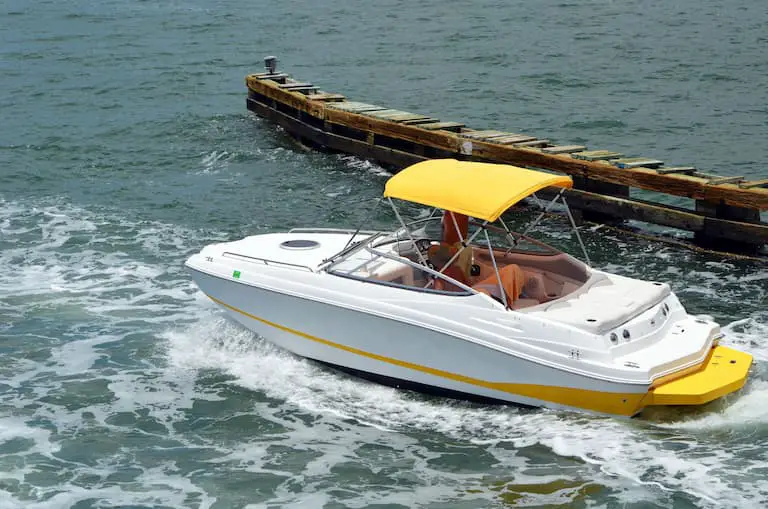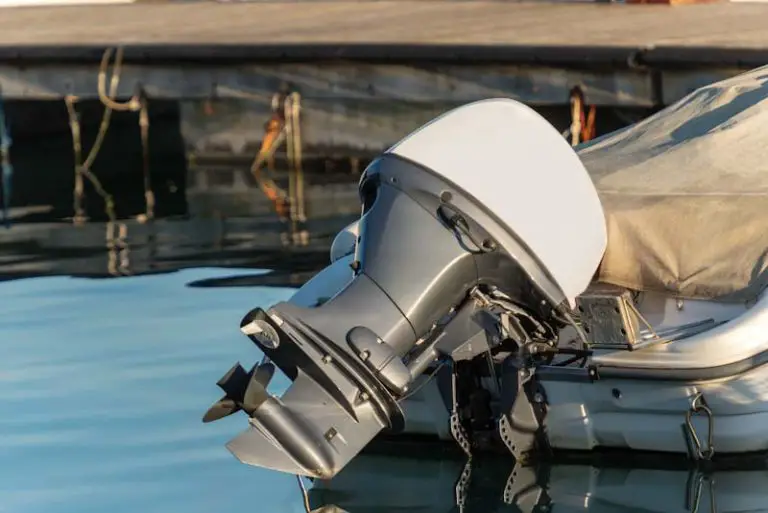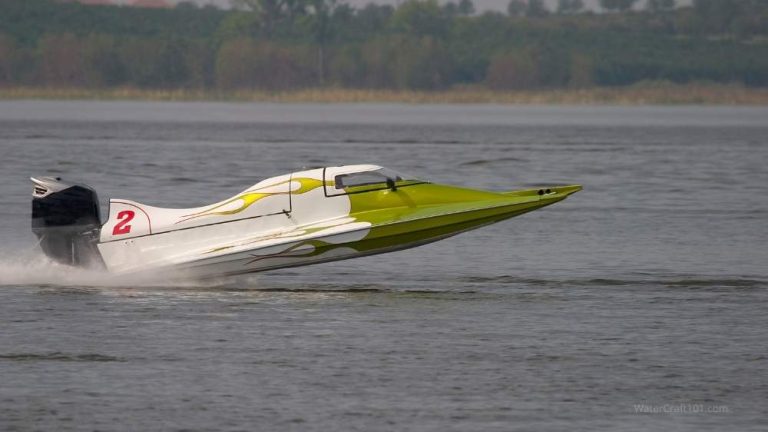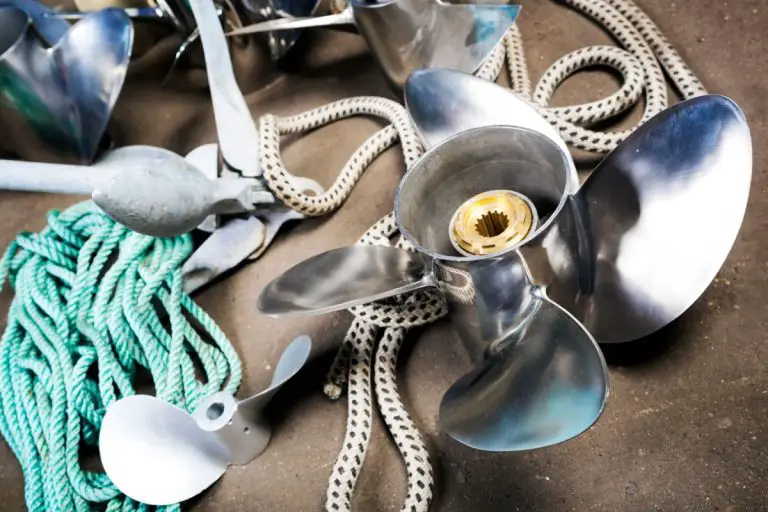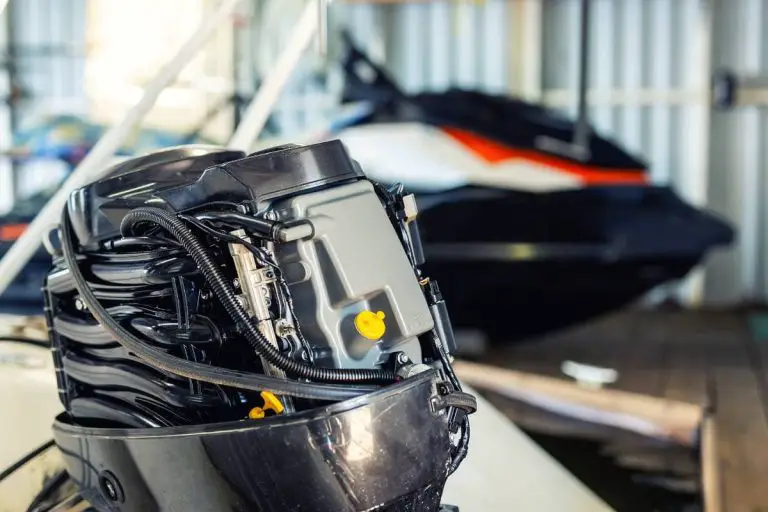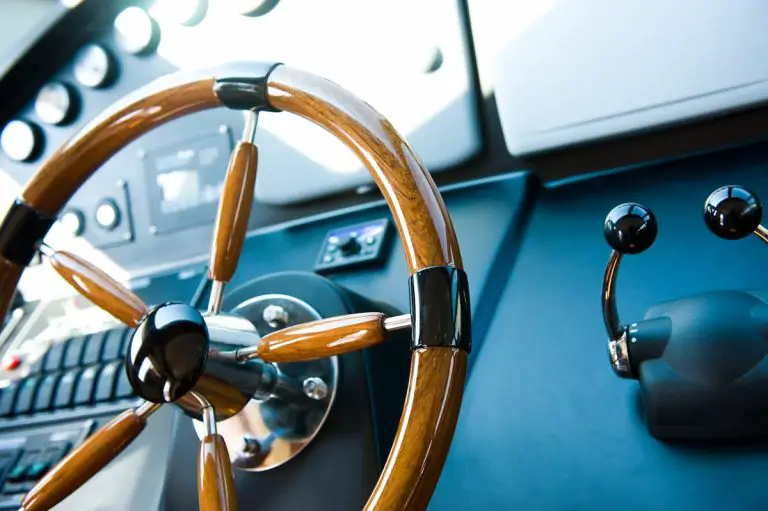17 Things You Didn’t Know About Powerboat Racing (Revealed!)
Powerboat racing is a sport with thrill, adventure, and a little danger. But apart from the enticing characteristics of this water sport, there are facts about powerboat racing that many boat enthusiasts seem not to know. For instance, did you know that the windows used for powerboats came from F-16 fighter jets?
If you are curious about powerboat racing and the facts behind them, let me share 17 things that you probably don’t know about this sport.
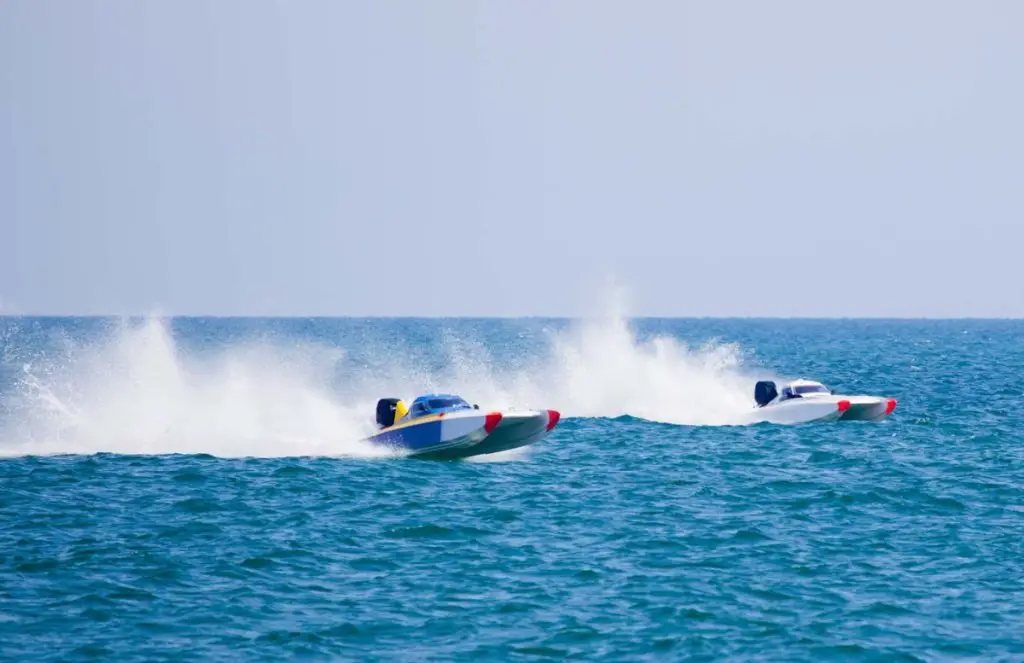
17 Facts About Powerboat Racing That You Need To Know
Powerboating is an extreme sport that first began over 100 years ago. The powerboats that today’s drivers use have high-performance engines that allow them to run at extremely high speeds.
Powerboat racing is a worldwide sport and has numerous international events every year, making it one of the most popular water sports there is.
But this fact is not the only thing you need to know about powerboat racing. Here are 17 more facts about this exciting sport that you probably didn’t know.
Fact #1: Powerboat Racing Came To Be Because Of Two Men Named Charles
Charles Merivale, a Cambridge student, challenged Charles Wordsworth, an Oxford student, to a river race in 1829. The race involved eight rowing crews and took place in Henly-on-Thames.
Wordsworth won the race, and after 27 years, the race became an annual event. While the first races were rowing races, they eventually led to powerboat racing as boats with engines came on the scene.
Fact #2: The First Major Powerboating Race Happened In 1903
The American Power Boat Association (APBA) is a membership-owned corporation. It is the sanctioning authority in the US for the Union Internationale Motonautique – the world’s powerboat racing governing body.
Moreover, the APBA organized the Gold Cup, the first major powerboating race, in 1903. (source)
Fact #3: A Formula 1 Powerboat Has A Crash Box
A powerboat race is a serious sport that poses extreme risks to the participants. These risks include collision or crashing. For this reason, a Formula 1 powerboat’s cockpit has an enclosed capsule construction. It detaches from the rest of the boat during an accident to keep the boater safe.
The crash box also has other safety features. That includes:
- airbags
- waterproof and damage-resistant crash box
- safety belt
When an accident happens, the crash box records the boat’s internal operations, allowing the governing authority to easily make a post-crash analysis. (source)
Fact # 4: The Crash Box On Powerboats Only Became Mandatory In 2007
While powerboat racing is an extremely dangerous sport, organizers only required powerboats to have a crash box during the 2007 season. The high fatality rate in powerboating competitions prompted the organizers of such events to pay more attention to the safety of the participants.
As a result, powerboats now have safety features such as crash boxes, shock-absorbent designs, and airbags. (source)
Fact #5: A Wooden Boat Holds The World Record For The Fastest Water Vehicle
The Spirit of Australia is a wooden boat constructed by Ken Warby in 1972. Warby did not have enough budget for high-quality boat parts, so he purchased timber and plywood that he could use for his project.
In addition, Warby only used three power tools to complete his boat:
- drill
- circular saw
- belt sander
To power the Spirit of Australia, he purchased three J-34 engines. Two of the engines cost $100 each, while he bought the third one for $60.
Warby set his boat’s official world record on October 8, 1978, at New South Wales, Australia’s Blowering Dam Lake. He drove his boat at 317.58 mph, allowing him to set the world water world record using a backyard-built boat. (source)
Fact #6: The Longer The Boat, The Faster The Speed
William Froude first noticed the relationship between a boat’s length and speed. He did his observation in the 1800s while he was researching warships for the British Admiralty.
Froude discovered that a boat that is longer than its waterline has the slightest drag. Such results in a faster speed.
Moreover, William I. Koch Marine Technology Professor Jerry Milgram backed Froude’s observation. According to the professor, the balancing act between a boat’s power and length affects how fast it can go.
Even now, the “Froude numbers” are essential for designing speedboats. The speedboats used for powerboat racing have long and sleek shapes. (source)
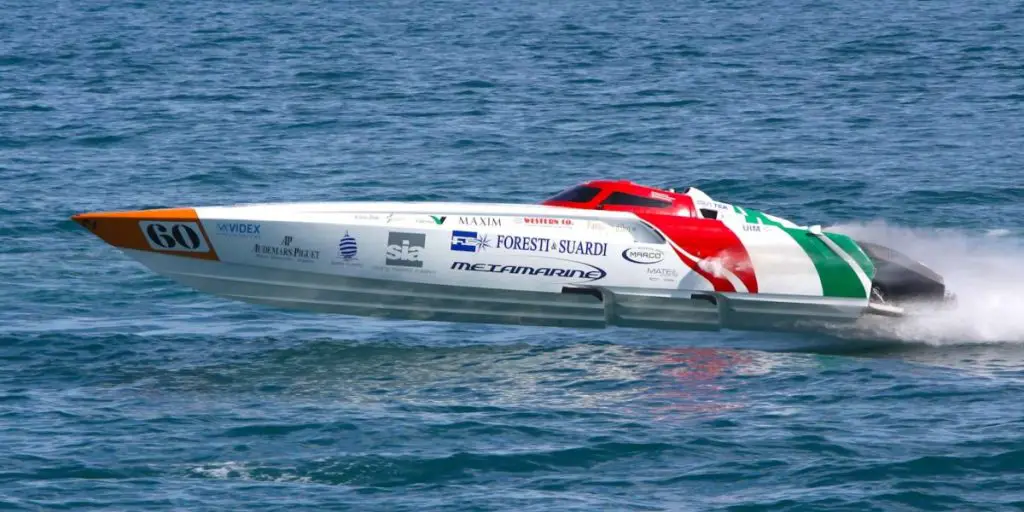
Fact #7: Powerboats Do Not Have Gears
The gearbox in powerboats does not have gears inside them. Instead, this gearbox is used to engage and disengage the propeller and engine. Boats do not need gears since they operate in the water and not on land.
Driving on the water is a lot different from driving on land. The harder a boat pushes into the water, the more the water resists. So, if a powerboat pushes the water hard, it will create friction, causing the boat to slow. That said, boats always need to be in low gear to maintain speed.
More than that, adding gears to a powerboat will cause unnecessary complexity. Such will result in undesired issues, such as increased fuel consumption and drag. So, in the end, adding gears to a powerboat would be counterproductive. (source)
Fact #8: Racing Boats Have Systems To Let Drivers Breathe Even When The Cockpit Is Full Of Water
It is not only the cockpit that makes powerboat racers safe if a crash happens. The racers also equip themselves with multiple protection systems. They need to wear a certified helmet and a head restraint called a Head and Neck Support device (HANS).
In the instance where a powerboat crashes, HANS prevents the driver from acquiring head and neck injuries.
The people who participate in powerboat racing also wear a mask connected to an oxygen supply on board. This system allows the boaters to breathe even if water fills the cockpit. (source)
Fact #9: Powerboat Materials Were Once Timber Wood And Plywood
The initial design of powerboats consisted of either plywood or timber wood. The problem is that these materials cannot withstand the force coming from a high rate of speed. The speed of the wooden boat and the fragility of the materials used to make it caused accidents during powerboat racing.
In the early years, speedboats didn’t have enclosed cell cockpits and safety harnesses yet, making this sport even more dangerous. For this reason, British powerboat designer Chris Hodges wanted to increase the safety level of powerboats, giving life to boats with enclosed cockpits.
In his design, he did not attach the cockpit to the boat’s main structure. Instead, it connects to the central area and hull of the boat. This design allows the hull to absorb impact in case of an accident, protecting the driver and reducing any injury they may suffer. (source)
Fact #10: Racing Powerboats Are Fast Enough To Make F1 Race Cars Look Slow
A Formula 1 powerboat has supreme speed with a very fast acceleration, making the F1 powerboat unrivaled in both water and motorsport.
This racing powerboat can even make an F1 race car with a top speed of 160kph look sluggish. Suppose a race car can accelerate smoothly in six seconds. In that case, a powerboat can efficiently run past it within only four seconds.
F1 powerboats reach speeds of up to 225kph. For this reason, not only can a powerboat out-pace a Formula 1 race car during acceleration, it can also leave it in the dust over longer distances. (source)
Fact #11: Saltwater Can Reduce A Powerboat’s Engine Output
Too much saltwater ingestion through the air intake can affect a powerboat’s engine output during a race. Salt residue can build up on the boat’s turbine blades, which changes the engine’s compression ratio. As a result, the engine’s temperature increases, causing the engine to overheat.
This build-up will create a pre-ignition condition, which will then cause the engine to catch on fire and acquire damage.
Fortunately, a driver can prevent saltwater from reaching their engine by staying ahead of their competitors. This way, the sprays coming from other boats will not get into their engine. (source)
Fact #12: Powerboat Riders Need To Move The Engine During The Race
The floor and steering wheel of Formula 1 racing powerboats consists of buttons. You can think of these buttons as similar to a car’s driver’s area. The powerboat racing participants use these buttons to bring the outboard engine in and out during a race.
Moving the engine in and out on the boat prevents it from getting in too much contact with the water as it can cause drag. However, too little contact with the water will cause the driver to lose control of the boat. That said, moving the engine’s prop in relation to the water allows the powerboat drivers to have more control over the boat. (source)
Fact #13: Double Hull Powerboats Have Less Drag
Double hull boats or catamarans are one of the first hull designs ever made. A deck bridges the two hulls, providing the boat with less drag, better stability, and additional beam. As a result, boats with a double hull design are faster than traditional speedboats.
The tunnel created by the two boat hulls allows air to pass through underneath the boat. This reduces the friction between the boat and the water and produces a lifting force that allows for extra speed. (source)
Fact #14: Powerboats Need To Use The Same Engine
The boats used for powerboat racing all need to use the same engine. A Mercury Marine V6 two-stroke engine powers these boats, thus prompting them to move. This engine can hold 32 gallons of 100LL Avgas at a rate of 129L per hour. Notably, AVgas is a type of fuel used in aircraft engines.
Moreover, the Mercury Marine V6 engine can generate more than 400 horsepower at 10,500 revolutions per minute (rpm). It can also move the boat to 200kph in just two seconds. (source)
Fact #15: Cigarette Boats Have A Link To Alcohol Distribution During World War I
Cigarette boats are a slender type of boat made out of fiberglass. This design allows cigarette boats to move at extremely fast speeds during a powerboat race.
This type of boat first became popular during the ’20s and ’30s. Cigarette boats even had a controversial history when the US government prohibited the production and distribution of alcohol. Many US citizens used fast cigarette boats to smuggle these goods without the government finding out.
Cigarette boats are also known as “rum-runners.” These boats were often used to transport illegal alcohol shipments from large ships off the mainland back into the country. (source)
Fact #16: Water-Jet Propulsion Accelerates A Powerboat More Than A Propeller
Propellers use a set of blades that rotate fast to prompt a powerboat to move on the water. While a water jet has the same concept, the difference is that it uses an impeller located inside a tube. This impeller rotates and accelerates the water out of the tube, resulting in the boat moving forward.
Water-jet propulsion is better than a propeller. All water jets contain and push all the discharge behind instead of outwards as a propeller does. A powerboat’s propeller also needs to work more as it interacts directly with the water.
On the other hand, boaters that use a water jet can move in shallow water. It can even move the boat in many ways. For instance, if a boat used for powerboat racing has two water jets installed side by side, the driver can move forward and sideways. (source)
Fact #17: The Rules Of The F1 Powerboat Racing Championship Are Similar To That Of F1 Car Racing
The Formula 1 powerboat racing championship rules say that participants need to have 12 teams and 24 powerboats competing against each other. This rule is very similar to Formula 1 car racing championship rules. (source)
Powerboat Racing – The Takeaway
As sports go, not many are more exciting or dangerous than powerboat racing.
Powerboat racing is an activity with a long-running history. As such, there are many rules and facts in powerboat racing that the average person won’t know. Hopefully, knowing these facts will help you understand and appreciate the sport of powerboat racing better.
Sources:
- George Gilbert Treherne Treherne, Charles Murray Pitman. The Record of the University Boat Race 1829-1909, and Register of Those who Have Taken Part in it. T. Fisher Unwin, 1909.
- DK. The Sports Book: The Sports, the Rules, the Tactics, the Techniques. China: Penguin, 2011.
- The Player. The Player Bookazine Issue 16. The Player, 2010.
- Sherry Howard. Boats. Carson-Dellosa Publishing, 2019.
- Bryan Barrass. Ship Design and Performance for Masters and Mates. Great Britain: Elsevier, 2004.
- New Scientist. Why Don’t Penguins’ Feet Freeze?: And 114 Other Questions. Great Britain: Hachette UK, 2016.
- American Academy of Orthopaedic Surgeons. Special Events Medical Services. USA: Jones & Bartlett Publishers, 2010.
- “Off-Shore Powerboat Racing.” Boating. Vol. 19, Nos. 1-5. January 1996. 31.
- Automotive Industries, Volume 11. Chilton Company, 1904.
- Pacific Motor Boat, Volume 9.
- Sir George Charles Vincent Holmes. Marine Engines and Boilers. Committee of Council on Education, 1889.
- Chris Caswell. “Double Your Pleasure. MotorBoating. April 2008. Vol. 197, No. 4. 76.
- The Player. The Player Bookazine Issue 20. The Player, 2012.
- J. Anne Funderburg. Rumrunners: Liquor Smugglers on America’s Coasts. USA: McFarland, 2016.
- Randy Vance. Power Boating For Dummies. USA: John Wiley & Sons, 2009.


